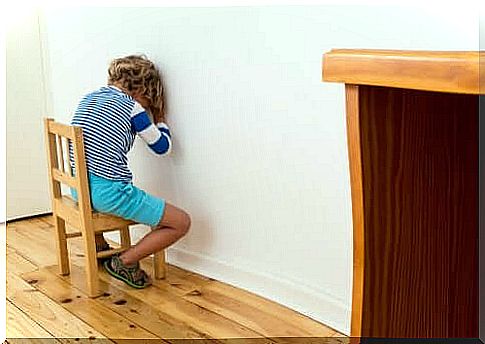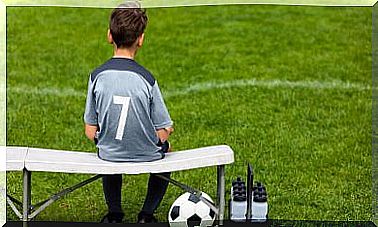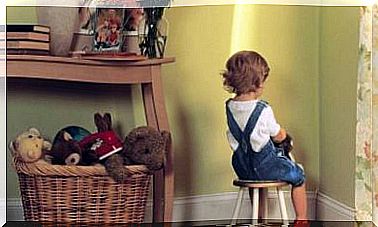Differences Between Positive And Negative Punishment

Fathers and mothers often use punishment to try to correct their children’s bad behavior. But most parents use this method without knowing the difference between positive and negative punishment.
Punishment is the least recommended behavior modification technique and should only be used in extreme cases, as it is a measure that does not allow children to learn what mistakes were made and how they can improve their behavior.
Differences between positive and negative punishment
Punishment is used so that the undesirable behavior does not happen again or that its repetition is considerably reduced. There are two ways to implement this method: through positive punishment or negative punishment. Next, we’ll explain the differences between these two types of punishment.
positive punishment
To apply positive punishment, an unpleasant stimulus must be given to the child in order to penalize the inappropriate behavior. In other words, it’s about giving something the child doesn’t like.

The aversive stimulus used to punish bad behavior may consist of performing an action, providing an object, transmitting an emotion, and so on. Thus, some examples of positive punishments would be:
- Shout out
- Hit
- Leave the child looking at the wall.
- Make an angry face.
- Insult
- To threaten.
But this way of educating is not at all pedagogical, as it encourages violence, aggressiveness, revenge, etc. Therefore, we must try to avoid its use.
negative punishment
Negative punishment consists of eliminating a pleasant stimulus when the child behaves badly. So it’s about removing positive reinforcement, that is, something she likes. As in the previous case, the withdrawn stimulus can be an object, an action, an emotion, etc.
For example, some negative punishments that are generally applied to children are:
- Do not allow them to watch TV.
- Forbid you to leave the house.
- Don’t let it play.
- Take out your favorite toy.
- Leave without dessert.
- Isolate the child in the room.
consequences of punishments
It is very important to keep in mind that this behavior modification technique should only be used when other educational methods have already been implemented and none of them have worked, such as:
- Employ dialogue and reflection.
- Provide positive reinforcement.
- Change the situation.
- Ignore unwanted behaviors.
- Offer time and distance.
- Propose several options to solve the problem.
Furthermore, when deciding to impose a punishment, it is essential to apply it immediately after the problematic behavior, explaining the reason for the punishment and remaining calm at all times.

In the same way, it is always necessary to reward and reinforce (with a compliment, an affectionate gesture, etc.) the behaviors that the child uses as an alternative to a previous misconduct. For example, if she has ever been punished for not collecting toys, when she does, she should be told that she did the right thing.
In short, to provide children with a good education, it is advisable to avoid the use of punishments frequently, as they can generate different consequences and negative effects on children and their relationship with the environment, causing them to start demonstrating :
- Fear
- Insecurity.
- Stress
- Social and coexistence problems.
- Anxiety.
- Submission.
- Low self esteem.
- Aggressiveness
So if you’re a mom or dad who uses traditional punishment as the primary method for correcting children’s behavior, it’s time for a change! Try to learn and implement other alternatives to punishments!









